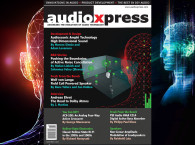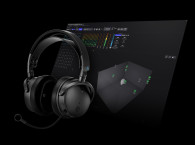
As Dolby confirms in its dedicated professional.dolby.com website, the Dolby Atmos Personalized Rendering beta is "for professionals working in the in the video game, music, film, and TV industries." The goal is to follow on the footsteps of important initiatives pushing in that direction in the content production world, including Apple's recent updates to support head-tracking for spatial audio content in its latest Logic Pro 10.7.3 update, and Genelec's recent announcement of the Aural ID software for personalized headphones monitoring.
With a binaural renderer of Dolby Atmos content through headphones tailored to each user, more work can be done in and out of the studio that will be able to translate correctly to actual 7.1.4 speaker setups where available, or actually rendered to compatible Spatial Audio content distribution services. With personalized rendering, production teams will be able to work from anywhere, and that is crucial to increase the available content and build critical mass for Dolby Atmos music production.

To recreate the way each one of us perceives sounds and the effects or our individual ergonomic features, requires a quantified mathematically head-related transfer function, or HRTF. The new Dolby Atmos Personalized Rendering beta app and service is the company's approach to this well-understood requirement for tailored binaural rendering. "For years, binaural playback has relied on default HRTFs that ignore the diversity of individuals, and this has created wild inconsistency in the way immersive audio is experienced over headphones," Dolby states.
Dolby Atmos Personalized Rendering uses a personalized HRTF (PHRTF) approach to recreate the features that are totally unique to each individual, and provide the most accurate spatial experience possible. Much in the same way as companies such as Embody or Genelec are promoting, the Dolby approach involves using a smartphone to transmit images of our head and ears to a cloud service, where the unique PHRTF is created. That PHRTF file can then be uploaded to any device or system to generate customized binaural monitoring when creating Dolby Atmos content.

The Dolby PHRTF Creator App uses a 50,000-point analysis of each individual's ears, head, and shoulders, using the unique abilities depth recognition currently provided by the latest iPhone models that support Apple FaceID, running iOS 13 or newer (iPhone 11 and newer models).
"Personalized Rendering gives creators and their teams the ability to experience spatial audio accurately and consistency by creating a headphone playback environment tailored to you. Additionally, using a PHRTF is a more comfortable way to create and listen to your spatial mixes. By providing a consistent and accessible listening environment, this new feature provides teams the flexibility to collaborate on spatial mixes across remote settings," Dolby adds.
Professionals creating content with the Dolby Atmos Renderer software suite can sign up for the beta now, and professionals working in the video game industry developing games on Windows PCs can also sign up to participate in Dolby's dedicated website: professional.dolby.com/phrtf/
www.dolby.com








